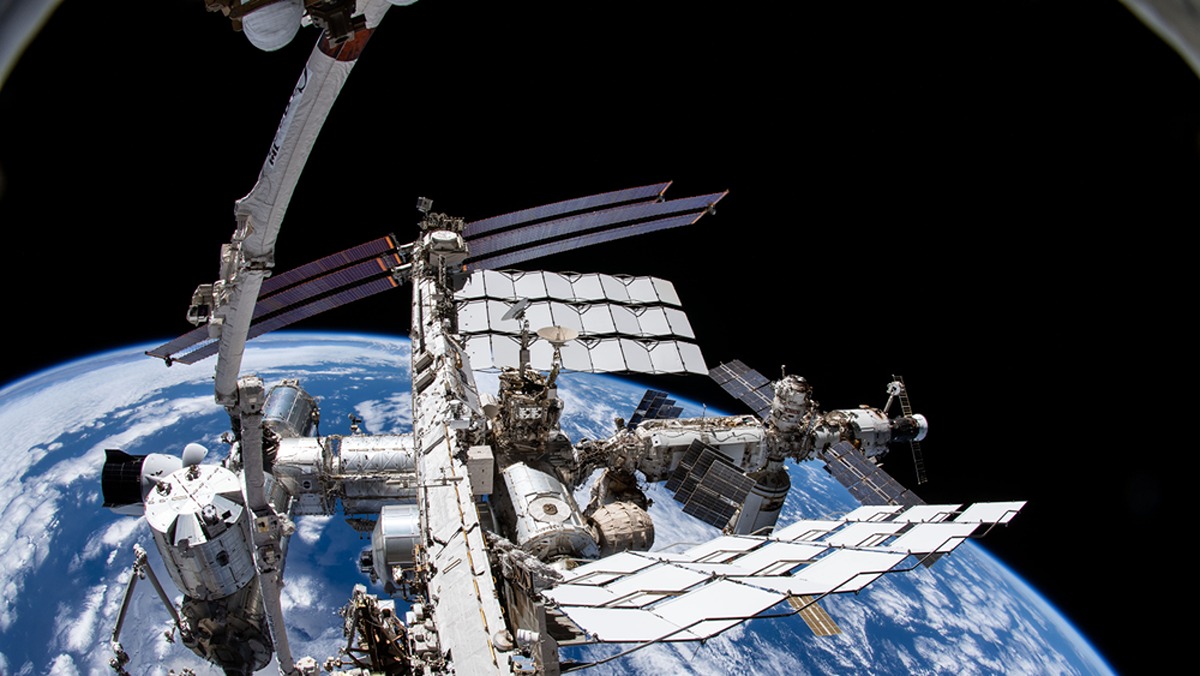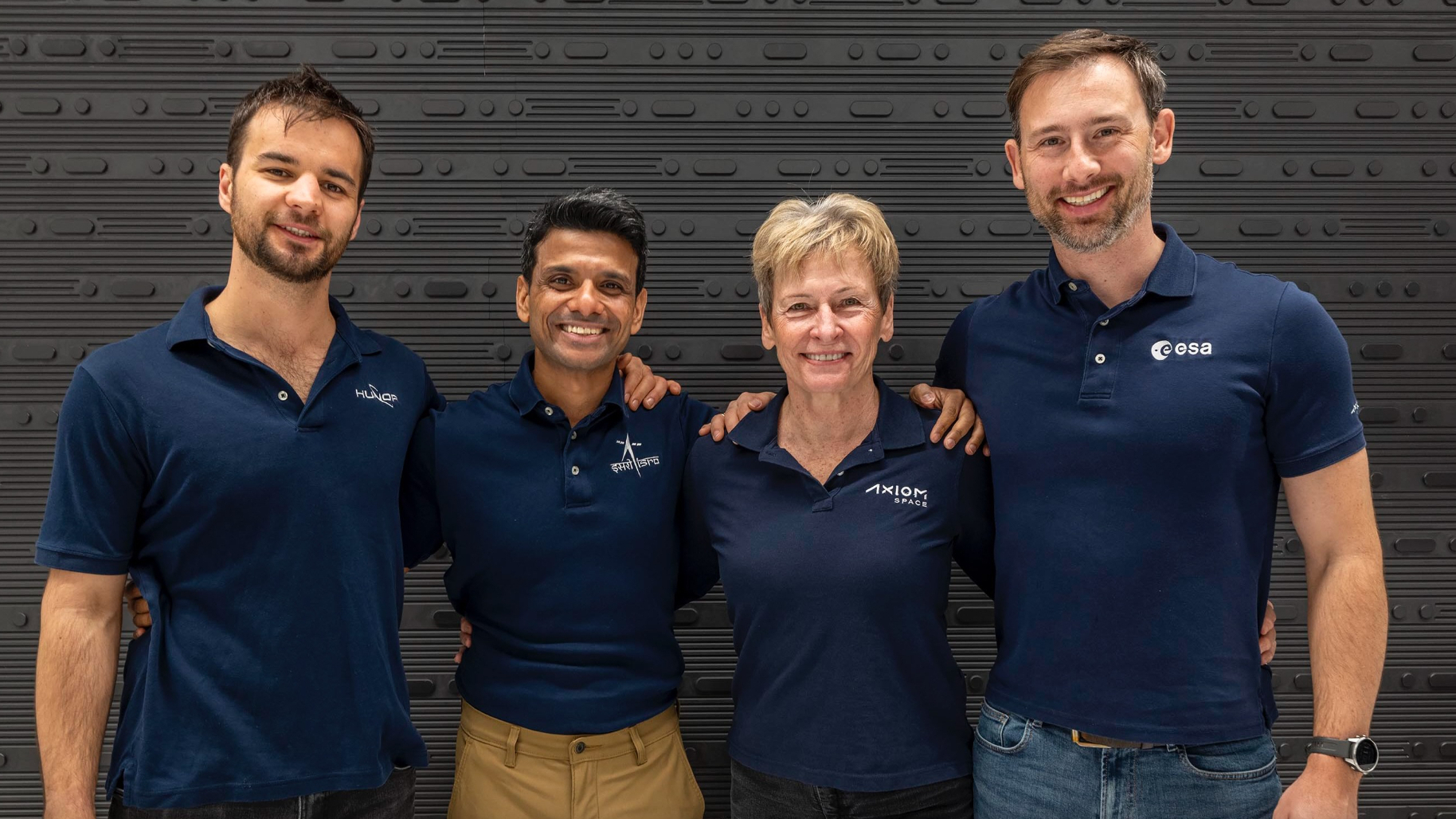The ISS just turned 25, and NASA is getting ready for the end (video)
The agency extended its deadline for a deorbit vehicle that will eventually steer the ISS into Earth's atmosphere.

The space station turned 25 years old on Wednesday (Dec. 6), and NASA is preparing for the pioneering outpost's end.
The agency just celebrated the milestone mission that docked the first two International Space Station (ISS) modules on Dec. 6, 1998. In the runup to that event, NASA updated its private proposal request to help deorbit the station when it retires in 2030 or so. And early stage funding is underway for several commercial replacements that would be run by private companies, with NASA as a customer. The agency wants all these vehicles ready by the time the ISS' work is done.
Commercial activity will allow more astronauts, from more countries, to "conduct science and technology development," ISS Expedition 70 commander Andreas Mogensen said during a livestreamed event on Wednesday marking the 25th anniversary.
"I think that's incredibly exciting, to see how many countries [will fly], and hopefully also in the future private companies are interested in utilizing a laboratory in low Earth orbit," said Mogensen, who is with the European Space Agency.
Related: Track the ISS: How and where to see it
The ISS first came together with the mating of the Russian Zarya module (launched on a Russian Proton rocket) and the U.S. Unity module (which flew on board space shuttle Endeavour's STS-88 mission.)
STS-88 commander Bob Cabana, now NASA's associate administrator, said during Wednesday's livestream that the station has seen a lot of change since that 1998 flight. "When I left the space station ... [it was] pretty spartan and immaculate. It's kind of accumulated a lot of stuff over the years."
Breaking space news, the latest updates on rocket launches, skywatching events and more!
The ISS has also accumulated modules from NASA, Russia, Europe and Japan, not to mention Canadian robotics. The program's partners are also pivoting harder into commercial ventures. After years of ISS private experiments manifested via the company Nanoracks, commercial astronauts are gradually coming on board, too, with missions organized by Houston company Axiom Space. Cargo deliveries from the U.S. also come privately now, via SpaceX and Northrop Grumman, while Russia continues to send government-funded Progress spacecraft.
Human flights have also changed a lot. Axiom Space and U.S.-led crews all come on board via SpaceX Crew Dragon spacecraft. Boeing's Starliner should follow in 2024, after several years of delay. The two U.S. space shuttle replacement vehicles are not the only human spacecraft, either, as Russian Soyuz spacecraft continue to send Russian-led crews aloft from the Baikonur Cosmodrome in Kazakhstan.
It will take several years to safely plan for the end of the ISS, which is why NASA is working on replacements now — alongside the envisioned deorbit vehicle. The updated request for proposal released on Tuesday (Dec. 5) changes the costing structure and also extends the deadline for proposals to Feb. 12, 2024 from the last deadline of Nov. 17, 2023. (Agency officials did not say in the press release why the extension was made.)
Should all go to plan from here, the award would be made no later than June 2024, NASA officials wrote in the update. "As with any development effort of this size, the [deorbit vehicle] will take years to develop, test and certify," the blog post emphasized.
By the time the ISS meets its end in Earth's atmosphere, ideally, at least one commercial space station would be up and running. Mogensen mused that future experiments could target ideas like making human tissue, organ equivalents or fiber optic production. "Those are examples of something that perhaps in the future, could find commercial aspects. I think that's really interesting."
Participants in the anniversary call represented all the largest ISS partners. Joel Montalbano, ISS program manager, called in from the ground alongside Cabana. The Expedition 70 astronaut crew included Mogensen, NASA's Jasmin Moghbeli and Loral O'Hara, Satoshi Furukawa (Japan Aerospace Exploration Agency) and Russian cosmonauts Konstantin Borisov, Oleg Kononenko and Nikolai Chub.
Join our Space Forums to keep talking space on the latest missions, night sky and more! And if you have a news tip, correction or comment, let us know at: community@space.com.

Elizabeth Howell (she/her), Ph.D., was a staff writer in the spaceflight channel between 2022 and 2024 specializing in Canadian space news. She was contributing writer for Space.com for 10 years from 2012 to 2024. Elizabeth's reporting includes multiple exclusives with the White House, leading world coverage about a lost-and-found space tomato on the International Space Station, witnessing five human spaceflight launches on two continents, flying parabolic, working inside a spacesuit, and participating in a simulated Mars mission. Her latest book, "Why Am I Taller?" (ECW Press, 2022) is co-written with astronaut Dave Williams.
